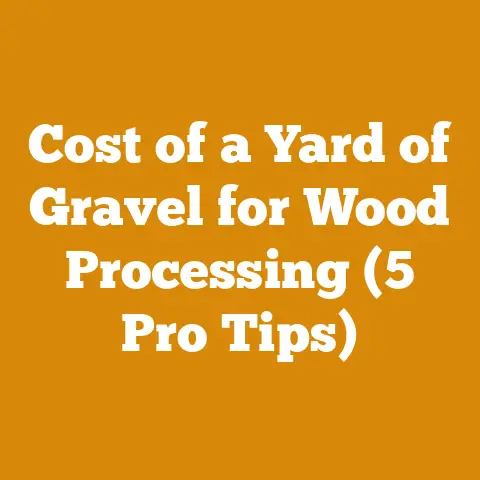Weed Wacker Heads for Tough Brush (Pro Tips for Heavy-Duty Cutting)
Weed Wacker Heads for Tough Brush: Pro Tips for Heavy-Duty Cutting
Let’s face it, those flimsy plastic lines that come standard on most weed wackers just don’t cut it (pun intended!) when you’re tackling thick weeds, overgrown brush, or even small saplings. I’ve been there, done that, and wasted far too much time and money on line that breaks every five minutes. That’s why I’m diving deep into the world of weed wacker heads designed for tough brush, sharing my experiences, research, and cost considerations to help you choose the right tool for the job and keep your project on budget. Bold designs are becoming increasingly common, and for good reason – they often deliver superior performance.
Understanding the Need for Heavy-Duty Weed Wacker Heads
Before we get into specific models and pricing, let’s clarify why you might need a heavy-duty weed wacker head. I’ve learned over the years that the right tool makes ALL the difference.
- Standard vs. Heavy-Duty: Standard weed wacker heads typically use thin nylon line, suitable for light grass trimming. Heavy-duty heads, on the other hand, are designed to handle thicker vegetation using stronger materials, often metal blades or thicker, reinforced lines.
- Typical Applications: These heads are ideal for clearing dense weeds, brambles, small brush, and overgrown areas where standard trimmers struggle. Think fence lines, ditches, wooded areas, and property edges.
- Safety Considerations: Using the wrong type of head can be inefficient and even dangerous. Forcing a standard trimmer to cut heavy brush can cause the motor to overheat, the line to break frequently, and even lead to kickback. Always wear appropriate safety gear, including eye protection, gloves, and sturdy boots.
Types of Heavy-Duty Weed Wacker Heads
There’s a surprising variety of heavy-duty weed wacker heads on the market. Let’s break down the most common types:
Metal Blade Heads
These heads feature rotating metal blades, similar to a miniature brush cutter.
- Pros: Excellent cutting power, durable, effective on thick brush and small saplings.
- Cons: Can be more dangerous than line-based heads if not used carefully, can damage trees and fences if you’re not precise, and may require more maintenance.
- Cost: I’ve seen these range from $20 to $80, depending on the quality of the blades and the overall construction.
String Trimmer Heads with Heavy-Duty Line
These heads use thicker, reinforced nylon line or composite materials.
- Pros: More versatile than metal blades, less likely to cause damage to surrounding objects, easier to use for edging.
- Cons: May not be as effective on extremely thick brush, line replacement can be frequent depending on the material.
- Cost: Expect to pay between $15 and $50 for the head itself, plus the cost of replacement line. Heavy-duty line can cost $10-$30 per spool, depending on the length and thickness.
Brush Cutter Conversion Kits
These kits allow you to convert your weed wacker into a brush cutter by replacing the head with a larger, more powerful cutting blade.
- Pros: Offers the most cutting power, suitable for clearing large areas of dense brush and small trees.
- Cons: Can be expensive (kits often cost $50-$150), requires a powerful weed wacker to operate effectively, and may not be suitable for all models.
- Cost: Conversion kits are a significant investment, ranging from $50 to $200 depending on the quality and features.
Factors Affecting the Cost of Heavy-Duty Weed Wacker Heads
The price of a heavy-duty weed wacker head can vary widely depending on several factors:
- Material Quality: Metal blades made from high-carbon steel will be more expensive than those made from cheaper alloys. Similarly, heavy-duty line made from reinforced nylon or composite materials will cost more than standard nylon line.
- Brand Reputation: Well-known brands often charge a premium for their products, but they also tend to offer better quality and durability.
- Head Design: More complex designs, such as those with multiple blades or automatic line feeding mechanisms, will generally be more expensive.
- Compatibility: Ensure the head is compatible with your weed wacker model. Some heads are universal, while others are designed for specific brands or models.
- Dealer vs. Online Retailer: You might find better deals online, but local dealers can offer expert advice and support. I often find that a combination of online research and local purchase yields the best results.
Estimating the Total Cost of Your Brush Clearing Project
Now, let’s get down to the nitty-gritty of estimating the total cost of your brush clearing project. This involves more than just the price of the weed wacker head.
Initial Investment
- Weed Wacker Head: $15 – $200 (depending on type and quality)
- Replacement Line/Blades: $10 – $50 (per spool or blade set)
- Safety Gear: $20 – $50 (eye protection, gloves, sturdy boots)
Ongoing Costs
- Fuel: $5 – $10 per gallon (for gas-powered trimmers)
- Maintenance: $10 – $30 per year (for repairs, blade sharpening, etc.)
- Labor (if applicable): $20 – $50 per hour (for professional brush clearing services)
Example Scenario:
Let’s say you’re clearing a 1/4-acre plot of land overgrown with weeds and small brush. You decide to purchase a metal blade head for $50, a set of replacement blades for $20, and invest in safety gear for $30. You estimate the project will take 10 hours to complete using a gas-powered trimmer.
- Initial Investment: $50 (head) + $20 (blades) + $30 (safety gear) = $100
- Fuel Cost: 10 hours x 1 gallon per 2 hours = 5 gallons x $7 per gallon = $35 (I’m estimating a slightly higher fuel cost here, as prices fluctuate)
- Total Project Cost: $100 (initial) + $35 (fuel) = $135
If you were to hire a professional brush clearing service, the cost could easily be $200 – $500, depending on the size and density of the brush.
Detailed Breakdown of Cost Components
To get a really accurate estimate, let’s break down each cost component in more detail:
Timber Purchase or Harvesting Costs (If Applicable)
This is relevant if you’re clearing brush on your own property and plan to use the wood for firewood or other purposes.
- Permits: Check local regulations for any permits required for tree removal or brush clearing. Permit costs can vary widely, from a few dollars to hundreds of dollars.
- Timber Value: The value of the wood will depend on the species, size, and quality of the trees. Firewood typically sells for $200-$400 per cord, but brush wood is generally worth less.
Tool Maintenance
- Blade Sharpening: Metal blades will need to be sharpened periodically to maintain their cutting efficiency. You can either sharpen them yourself with a file or take them to a professional. Professional sharpening typically costs $5-$10 per blade.
- Line Replacement: Heavy-duty line will last longer than standard line, but it will still need to be replaced eventually. Keep a supply of replacement line on hand to avoid interruptions.
- Trimmer Repairs: Like any power tool, weed wackers can break down. Factor in the cost of potential repairs, such as replacing spark plugs, air filters, or carburetors.
Labor Wages (If Applicable)
If you’re hiring a professional brush clearing service, get a detailed quote that includes labor costs, equipment rental fees, and disposal fees.
- Hourly Rate: Labor rates for brush clearing typically range from $20-$50 per hour, depending on the experience and skill of the worker.
- Project-Based Pricing: Some contractors may offer project-based pricing, which can be more predictable than hourly rates. Get multiple quotes to compare prices.
Permits (If Applicable)
As mentioned earlier, check local regulations for any required permits. Ignoring permit requirements can result in fines and delays.
- Contact Local Authorities: Contact your local city or county government to inquire about permit requirements for brush clearing.
- Permit Fees: Permit fees can vary widely, from a few dollars to hundreds of dollars.
Current Industry Benchmarks and Statistical Data
Here are some current industry benchmarks and statistical data to help you get a sense of typical costs:
- Average Price per Cord of Firewood: As of 2023, the average price per cord of firewood in the United States is $200-$400, depending on the region and wood species. (Source: Local firewood suppliers and online marketplaces)
- Average Hourly Rate for Landscaping Services: The average hourly rate for landscaping services in the United States is $50-$100, depending on the location and the scope of the work. (Source: Bureau of Labor Statistics)
- Average Cost of Brush Clearing per Acre: The average cost of brush clearing per acre in the United States is $500-$2,000, depending on the density of the brush and the terrain. (Source: Landscaping contractors and forestry services)
Practical Tips for Cost Optimization and Budget Management
Here are some practical tips for optimizing costs and managing your budget:
- Choose the Right Tool for the Job: Don’t overspend on a brush cutter if you only need to clear light brush. A heavy-duty string trimmer head may be sufficient.
- Shop Around for the Best Prices: Compare prices from different retailers and online marketplaces before making a purchase.
- Maintain Your Equipment: Regular maintenance will extend the life of your equipment and prevent costly repairs.
- Do It Yourself (If Possible): Hiring a professional can be expensive. If you’re physically capable, consider doing the work yourself.
- Salvage and Reuse Materials: If you’re clearing brush on your own property, consider using the wood for firewood, mulch, or other purposes.
- Plan Ahead: Planning your project carefully will help you avoid unexpected costs and delays.
Relevant Calculations and Formulas
Here are some relevant calculations and formulas that may be helpful:
-
Estimating the Volume of Logs in Cords: A cord is a unit of volume equal to 128 cubic feet. To estimate the volume of logs in cords, measure the length and diameter of each log and use the following formula:
Volume (cubic feet) = π * (diameter/2)^2 * lengthThen, divide the total volume by 128 to get the number of cords. * Estimating Drying Time Based on Moisture Content: Firewood needs to be dried to a moisture content of 20% or less to burn efficiently. The drying time will depend on the wood species, the climate, and the stacking method. As a general rule, firewood will take 6-12 months to dry properly. You can use a moisture meter to check the moisture content of the wood. I always err on the side of caution and give it a full year.
Case Studies on Budgeting and Cost Management
Let’s look at a couple of case studies to illustrate how budgeting and cost management can impact the outcome of a brush clearing project:
Case Study 1: DIY Brush Clearing on a Budget
A homeowner wanted to clear a 1/2-acre plot of land overgrown with weeds and small brush. They decided to do the work themselves to save money.
- Budget: $200
- Equipment: Used weed wacker with a heavy-duty string trimmer head ($50), replacement line ($20), safety gear ($30)
- Labor: 40 hours
- Outcome: The homeowner was able to clear the land within their budget, but it took significantly longer than expected. They also experienced some minor injuries due to lack of experience.
Case Study 2: Professional Brush Clearing with a Detailed Budget
A property owner hired a professional brush clearing service to clear a 1-acre plot of land.
- Budget: $1,500
- Equipment: Professional brush cutter, chainsaws, chipper
- Labor: 20 hours
- Outcome: The property owner was able to clear the land quickly and efficiently, but the cost was significantly higher than doing it themselves.
- Limited Access to Capital: They may have difficulty obtaining loans or financing to purchase equipment.
- Fluctuating Timber Prices: Timber prices can fluctuate widely, making it difficult to predict profitability.
- Competition from Larger Companies: They face competition from larger companies with more resources and economies of scale.
- Regulatory Compliance: They must comply with a variety of regulations related to logging, transportation, and environmental protection.
- Seasonality: Firewood sales are seasonal, with demand peaking in the winter months.
To overcome these challenges, small-scale loggers and firewood suppliers need to focus on cost optimization, efficient operations, and effective marketing.






